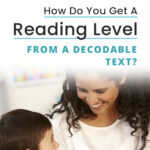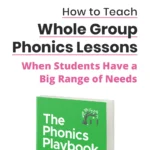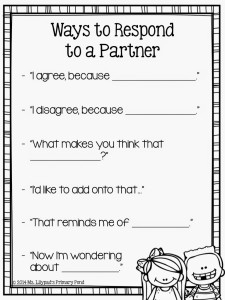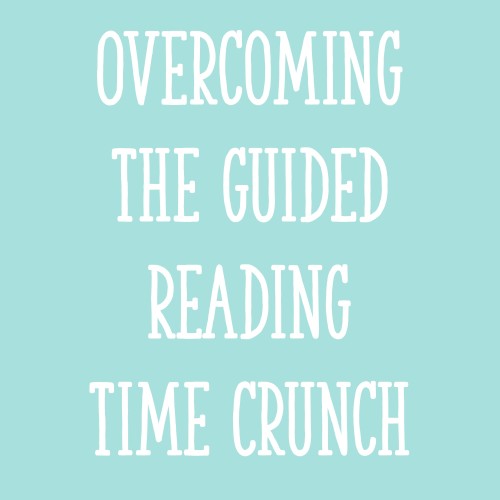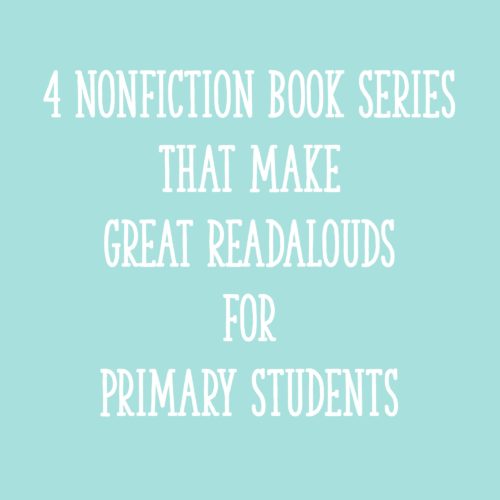Do you use leveled books with your students?
A reading level, as you probably already know, is a letter or number assigned to a book that is intended to indicate the difficulty level of the text. There are different leveling systems – you may have heard of the Fountas & Pinnell reading levels, DRA, Lexile, etc.
Each leveling system has different qualifications for leveling books. The Founas & Pinnell qualifications, for example, are quite complex. They incorporate the content of the text, the length of the text, the types of phonics patterns included in the words, the length of the sentences, the type of sentences…and more!
Sometimes people use the term “leveled books” to refer to books that are written specifically so that they fit the description of a certain reading level.
But technically, nearly any book can be assigned some type of reading level.
In recent years, you may have heard a buzz about leveled books being “bad,” or that they shouldn’t be used to teach reading. However, this statement can be confusing and could be mis-interpreted.
First and foremost…if we never allowed our students to read “leveled” books…then they would never read a “regular” book! They wouldn’t be able to enjoy Frog and Toad or learn about Jupiter. Just because a book has been assigned a level does not mean that it’s “bad.”
I don’t know about you, but I’m not going to follow my students around and snatch books away from them just because some reading leveling system decided to assign that book a level. ?
So where is this “leveled books are bad” argument coming from? I think that a few different things have contributed to it:
- Widespread under-use of decodable books
- A lack of high-quality, phonics-based instruction
- Some students’ over-reliance on context as a reading strategy
In this post, I’ll explain each one of these contributing factors, describe when leveled books CAN be helpful, and share situations where I rely on decodable books rather than leveled books.
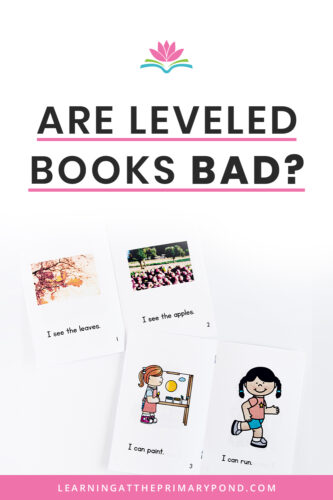
Factor #1: Widespread under-use of decodable books
A decodable book is a book that has been carefully written so as to contain only specific phonics patterns (and perhaps high frequency words). Leveled books, on the other hand, are not as “controlled” for phonics patterns as are decodable texts. There may contain more challenging words, with patterns that students haven’t yet been taught.
Decodable texts are incredibly valuable for in-context phonics practice. In the last few decades, however, decodable books haven’t gotten as much “love” as they deserve. In some schools, they’re not used at all.
People calling leveled books “bad” is, I think, partially a reaction to decodable books not being used nearly as often as they should be. Read this blog post to learn more about decodable books and how to use them effectively.
Factor #2: A lack of high-quality, phonics-based instruction for all students
Currently, many students in the U.S. are not getting the phonics instruction they need. This is especially harmful to students who have reading difficulties like dyslexia.
At the time of writing, our NAEP scores (from a nationwide reading test) have not improved in years. Students aren’t performing as well as we want them to. Many students aren’t getting what they need to be successful readers – and I believe that a lack of phonics instruction plays a large part in that.
Moreover, effective phonics instruction incorporates decodable texts. Students need opportunities to practice what they’re learning. Again, in many schools, there just hasn’t been enough of that. And I’m not blaming teachers here – this information needs to be “baked into” teacher education programs and professional development. (I only learned this information after teaching for a couple of years.)
In my experience (and this is backed by Cheatham & Allor’s meta-analysis), IF you have strong phonics instruction and regularly use decodable texts – especially, especially when students are first learning to read – using some leveled texts is just fine. I mean, many leveled books contain the stuff that gets kids excited about reading: exciting stories and fascinating facts! (Keep reading this post to hear some interesting research findings on using leveled texts.)
Also, keep in mind that a text can BECOME decodable for students – even if the text technically has a level on it!
If students already know the phonics patterns included in the words of that text, then the book IS already decodable for those students.
Or, by pre-teaching certain words that students wouldn’t be able to decode on their own, a group of students can still be successful with a leveled text.
When you pre-teach words that are currently “out of reach” phonics-wise, the kids can then focus on decoding the other words. (You just have to make sure you have a book that doesn’t include TONS of words that have out-of-reach phonics patterns.)
Decodability of text is all relative to the reader!!
Factor #3: Some students’ over-reliance on context
Have you ever accidentally overlooked a typo or misspelled word because your brain was making sense of the sentence?
You were using context – the human brain wants to make sense of what it’s reading! It’s natural.
However, some young readers rely on context for decoding. They’re figuring out words mostly by thinking about what makes sense in the sentence, or by using the pictures.
Instead, we want to encourage kids to use phonics knowledge to decode words.
Here’s why: reading using context usually doesn’t get you very far. When students encounter new words, if they don’t have the phonics knowledge and decoding tools they need, they’re not going to be able to decode these unfamiliar words.
Often, students “get by” in the primary grades by memorizing words and using context. But when they’re eventually required to read more challenging content area material, everything falls apart. The foundation of phonics (see previous section!) was not there. Context no longer works.
So what does this have to do with leveled books? Well, it’s typically easier for kids to over-rely on memorized words and context clues when reading leveled books. Decodable books, on the other hand, tend to “force” kids to actually apply their phonics knowledge. (And that’s important!)
Ultimately, however, it’s the instruction, in addition to the type of book, that helps students learn to rely on phonics knowledge to decode new words. As I mentioned in the previous section, you can provide scaffolds so that students can be successful – and utilize phonics-based decoding – even if a text has a level on it.
When ARE leveled books helpful?
Many leveled books are highly engaging for young readers. Since they’re not quite as restricted by phonics patterns, they contain richer vocabulary.
They can also be great for teaching or reinforcing content area concepts. (And that’s a biggie, because background knowledge plays a HUGE role in reading comprehension!)
Leveled books may also be better for building comprehension skills in general. Price-Mohr & Price’s 2019 article “A Comparison of Children Aged 4–5 Years Learning to Read Through Instructional Texts Containing Either a High or a Low Proportion of Phonically-Decodable Words,” describes a study were one group of children worked with highly decodable texts and another group worked with texts that were lower in decodability (aka leveled texts).
The results of this study demonstrate a statistically significant difference in children’s comprehension skills between the two groups. The children who worked with the highly decodable texts did not perform as well on comprehension tasks.
Therefore, leveled books may help students build stronger comprehension skills.
I think the results of that study are informative and my own experiences align with the results. But! I don’t think this means that we should discard decodable texts. Because…
In order for students to build strong comprehension skills (especially in the middle and later grades in elementary schools), they need to be able to decode a text first!
And of course, you can work on both decoding and comprehension in the same small group lesson. Absolutely! I do comprehension work with my decodable texts, too.
I think it all comes down to where your focus is and what skill(s) you most want to emphasize for a particular group of students – that can help guide your choice of text.
I also want to share the last line in the article “The Influence of Decodability in Early Reading Text on Reading Achievement: A Review of the Evidence” (Cheatham & Allor, 2012) with you:
“[w]e believe the field needs to consider decodability as a text characteristic rather than a type of text.”
Yes, yes, yes! Some leveled texts are more “decodable” than others. And again, whether a text is decodable or not also depends on what phonics patterns the reader has mastered – as well as the amount and type of supportive teaching we provide.
Who are leveled books NOT right for?
When students are first learning to read, I do feel that it’s important to rely heavily on decodable texts. Students, especially in Kindergarten and early 1st grade, need to get to a point where they are consistently relying on their phonics knowledge to decode words.
So here’s what I do: I often start out with Level AA or Level A patterned books to teach students very basic print skills. They learn to point 1:1 under words, recognize a few very simple high frequency words in print, practice identifying alphabet letters and sounds in context, practice identifying the first letter of a word, etc. There is some level of “pretend reading” going on here – but pretend reading is a normal part of the developmental process. (You probably see preschoolers “pretend reading” quite often.)
But I use Level A or Level AA books for a short period of time. As soon as possible, I transition kids into patterned decodable texts (with a few simple high frequency words and VC/CVC words) or purely decodable texts. These types of texts require students to use actual phonics knowledge and decoding skills. And that’s exactly what we want!
Once students begin to consistently use their phonics knowledge to decode words, I’m then comfortable using some leveled texts with them in small group . But again, I provide support to make those texts accessible to students (i.e. by pre-teaching some words that students wouldn’t be able to decode yet). And of course, we’re still using lots of decodable texts.
Later, after students have mastered many basic phonics patterns and can decode some multisyllabic words, I feel comfortable relying mainly on leveled texts. I still use decodable texts as part of my phonics instruction.
Also, when I’m working with certain students during reading intervention, I actually don’t use leveled books all that often. And it’s for one or more of these reasons:
- The student is learning to read for the first time – and they need to learn how to “unlock” print by blending and using their letter-sound knowledge.
- The student has dyslexia and we really need to focus on mastering phonics patterns within a controlled reading “environment.”
- The student is guessing words and over-relying on context to read.
- I simply don’t have time – I teach reading intervention and want to prioritize decodable texts and in-context phonics practice. The kids do get a lot of comprehension work when they’re in class, and I only get to see them twice per week.
You know your students best and can decide how you want to balance decodable and leveled texts – and the balance will probably change throughout the school year.
Conclusion
Leveled books are tools – pieces of the literacy puzzle. They’re not inherently bad or inherently good. It all comes down to how you use them, when you use them, and with whom you use them.
I hope that this post was helpful to you in making decisions about books to use with your students. If you’re in need of printable leveled books, check out the leveled readers in my TeachersPayTeachers store. You can find a variety of printable and digital texts at that link – and you can scroll through several pages of resources to find exactly what you need.
If you need Leveled Readers, check out the sets in my TPT store. They are available in print, digital, or a print and digital combination to meet your current needs. Each set includes 5 books and accompanying lesson plans!
The lesson plans are ready-to-teach and include suggestions for a book introduction, comprehension questions, strategy instruction, and follow-up activities for phonological awareness, phonics, high frequency words, etc.
And if you’re looking for a complete phonics program that includes lots of decodable texts, check out From Sounds to Spelling.
Happy teaching!
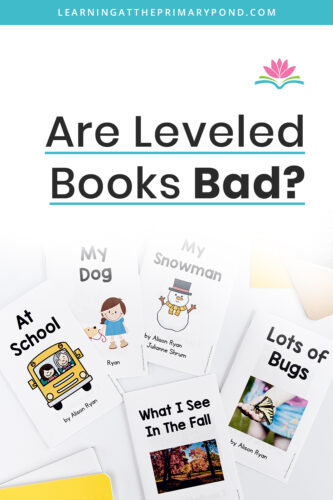
References
Cheatham, J., & Allor, J. (2012). The influence of decodability in early reading text on reading achievement: a review of the evidence. Reading and Writing, 25(9), 2223-2246.
Price-Mohr, R., & Price, C. (2019). A Comparison of Children Aged 4–5 Years Learning to Read Through Instructional Texts Containing Either a High or a Low Proportion of Phonically-Decodable Words. Early Childhood Education Journal, 48(1), 39-47.

